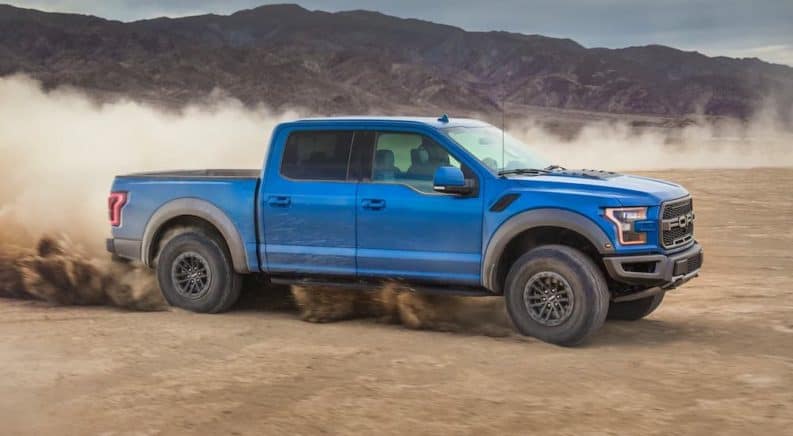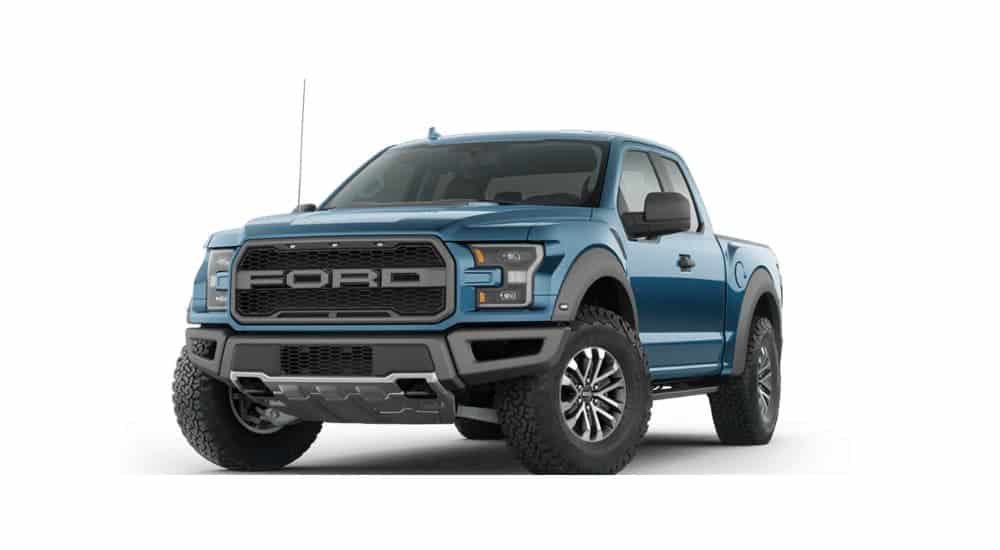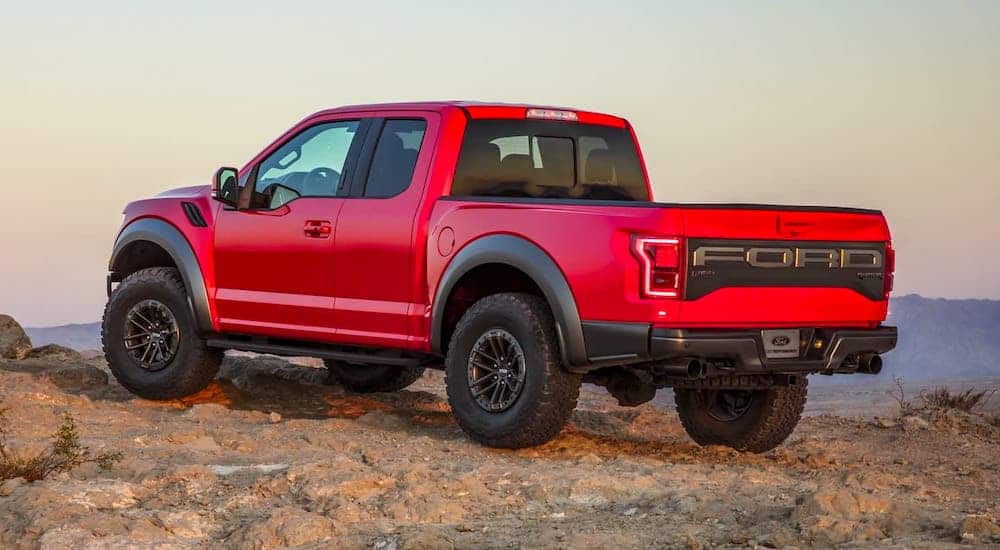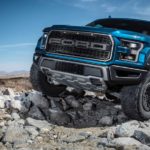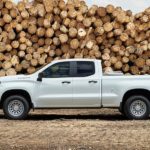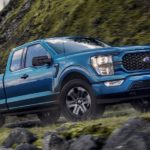“He can’t see you if you don’t move!” Dr. Grant said to Lex. The terrified girl froze, desperate to escape the attention of the gigantic Tyrannosaurus Rex. But what worked for fictional characters in Michael Crichton’s Jurassic Park isn’t exactly sound advice for all situations. Ford should make no mistake that Ram’s T-Rex (officially TRX, but we all know what it stands for) has Ford’s Raptor firmly in its sights, and standing still is a sure-fire way to get destroyed by this ferocious new competitor. The 2021 Ford F-150 Raptor doesn’t need to blow our minds with power or luxury to be a success, but like the prehistoric creature it seeks to emulate, it needs to respond with intelligence in the face of a new and imposing challenge.
Not every vehicle with AWD or more than 5″ of ground clearance is suited to off-roading. While a stock RAV4 is certainly designed to engage in mild trail running, you’d be sure to get it stranded or shattered on serious endeavors like tackling the Rubicon Trail or the Baja 1000. It’s a smart choice for the mass market – most people would much rather be able to enjoy a quiet, efficient ride in a vehicle that only takes up one parking spot than conquer the world’s most difficult trails. If that does not sound like you, however, then the specialized off-roaders of the world are probably more your speed. Huge tires, wide stances, lifted suspensions and weighty skid plates are signature features of vehicles like the Wrangler, Raptor, and TRX that make them more at home off-road than on it.
While the Wrangler is all about slowly, carefully navigating challenging trails, the latter trucks are geared towards high-speed thrill rides over dirt, stone, and sand. Although the F-150 Raptor had stood alone in the full-size off-road pickup market for years, the 2021 Ram 1500 TRX was designed to outperform it in many ways, significantly raising the stakes for speculations on the details of the 2021 F-150 Raptor. So, bearing in mind that details on the new Raptor are scarce, let’s have some fun and think about what Ford needs to deliver in order to, as Dr. Ian Malcolm put it, “find a way.”
The Raptor Advantage – “Low” Size and Cost
Now that it has meaningful competition, the Ford F-150 Raptor can be compared to another vehicle to see its upsides. In this segment of two models, the Raptor’s biggest advantages are where it is smaller: the dimensions and the price tag.
Make no mistake; the current F-150 Raptor is a big truck. Its broad stance and over 12-inch wide tires push it well past the point of demanding extra clearance lights, and it weighs in just shy of three tons. However, every inch counts for vehicles this large when it comes to feeding the Raptor and finding a place in civilization to park it. If you’ve got a garage or parking space small enough that it isn’t measured in acres, it’d be wise to check on the 2021 Raptor’s dimensions before committing to it – but you can be certain that anywhere a TRX will fit, a Raptor fits better.
A more substantial impact of the physical dimensions is the truck’s resulting fuel efficiency because every extra inch wider or taller means substantial drag increases. And when the gas tank holds dozens of gallons of premium fuel, those inches mean you’ll be burning hundreds of dollars in fuel faster than a Raptor goes from 0 to 60. Modern designs have also proven that fuel-conservative powertrains can still be absurdly powerful; the current F-150 Raptor’s V6 Ecoboost is a testament to that. While off-roading is the wrong hobby for passionate environmentalists, nobody can argue against a lower cost of operation, and the simple truth is that making 16 MPG in a Raptor results in nearly half the fuel expenses of a TRX guzzling 12 MPG.
Once again, this is not to say that the Raptor is efficient or low-cost. It is a premium-gas guzzling machine. It’s just that the competition is so far away from it in these categories that if money is any kind of consideration, then the current Raptor is a no-brainer. The current Raptor also starts at $53,455; compare that with the TRX, which starts at over $71,000. When it comes to physical dimensions, efficiency, and purchase price, the Raptor is still in a dominant position, so any sacrifices on these points in 2021 may not be the route to take.
Adapt to Survive
We have witnessed evolution at work with Ram dropping a 702 hp Hellcat engine into the TRX. Simply put, Raptor’s current 450 hp EcoBoost that has been so impressive for so many years is no longer satisfactory. Likewise, the conventional solid axle and leaf spring suspension system in the Raptor used to be adequate but now has to compete against a more composed five-link suspension with coil springs. The apparent difference is so drastic that it might seem inevitable that Ford will throw the whole thing out and start from scratch.
It’s a bit of a shame, then, to see that the mainstream F-150 is sticking with the leaf spring suspension in its 2021 redesign. While rumors have circulated that the 2021 F-150 Raptor will receive a coil spring system, it’s not especially likely that Ford will deviate so far from the script – but one can still dream. If the 2021 F-150 Raptor is destined to keep a leaf spring suspension, let’s see if Ford upgrades the shock absorption system to deliver greater composure on corners, sand dunes, and freeways alike. The Fox Racing adaptive dampers it uses today are good, but no longer good enough.
Most importantly, however, Ford has to offer a significantly better powertrain in 2021. The V6 EcoBoost is great, but sticking with it now is akin to surrendering the year to Ram. Ford might limit its losses if it can engineer a way to coax a livelier sound and a little more power from it. However, simply tweaking this engine is like fighting a fire by blowing on it. Fortunately, Ford already has two or three great powertrains it can use to turn the tide in this battle.
The obvious answer is a V8 of their own. Ford SuperDuty trucks have an enormous new 7.3L block optimized to deliver low-end torque and high-output power. Even more exciting, however, would be the supercharged 5.2L engine from Shelby GT500 Mustang, which throws down over 700 hp and over 600 lb-ft of torque despite being smaller than the Super Duty’s engine. With this hand-built cobra-stamped monster under the hood, Ford would legitimately compete with the segment’s new benchmarks for acceleration and top speed.
On the other hand, the more likely outcome is that Ford will offer the 2021 F-150 Raptor with another F-150 powertrain. F-150 offers a V8 of its own, but it’s overshadowed by the Mustang and Super Duty V8s. Far more interesting would be the new 3.5L PowerBoost hybrid that’s rated to 430 hp and 570 lb-ft on the standard F-150. There are two problems with this, though. First, Ford might as well roll over and give up if they’re going to put this engine in a Raptor without seriously boosting the performance since it basically matches the 460 hp and 510 lb-ft of the current EcoBoost. Second, this is not a segment that markets to environmentalists, and simply put, a hybrid powertrain is as likely to alienate current fans as it is to attract new ones. If Ford is going to give the Raptor a hybrid powertrain, we just hope it’ll be tuned to blow the standard F-150 version out of the water.
The Evolution Revolution is On
In any case, the gauntlet has been thrown down, and the ball is in Ford’s court. It’s a good thing that Ford isn’t rushing the 2021 F-150 Raptor because its answer to the TRX needs to be agile, quick, and co-ordinated to adapt to its new environment. If you’re considering a 2021 performance truck as a “2020-is-over” present to yourself, the biggest questions to ask yourself pertain to cost and raw ability. Let’s see if Ford manages to preserve the Raptor’s sizable economic advantage while narrowing the chasm of power, quickness, and composure that Ram has opened. Ford’s best chance to overwhelm the Ram may not be with brute force, but by cleverly and systematically attacking weaknesses just like the Raptor’s Jurassic namesake.

